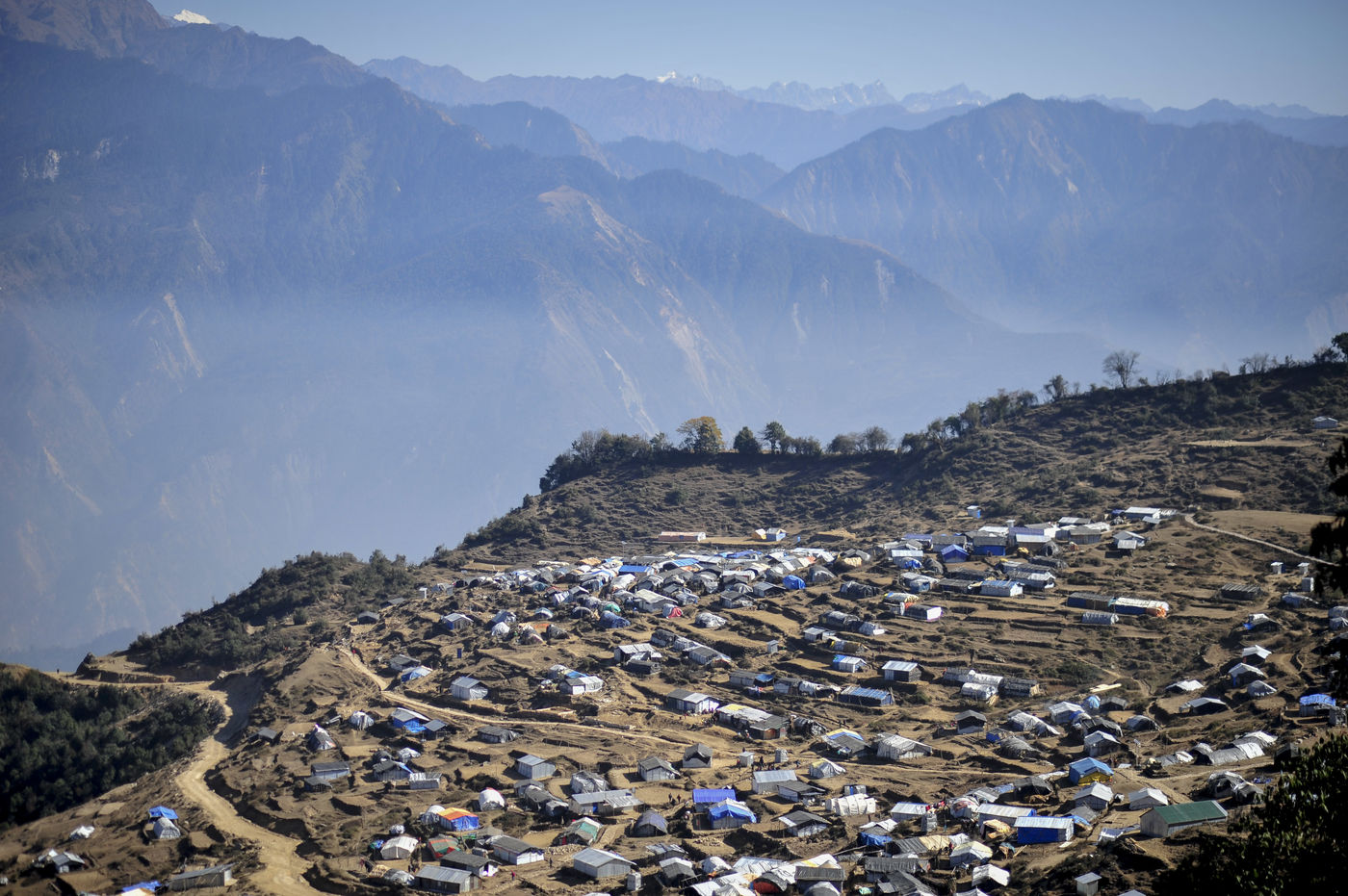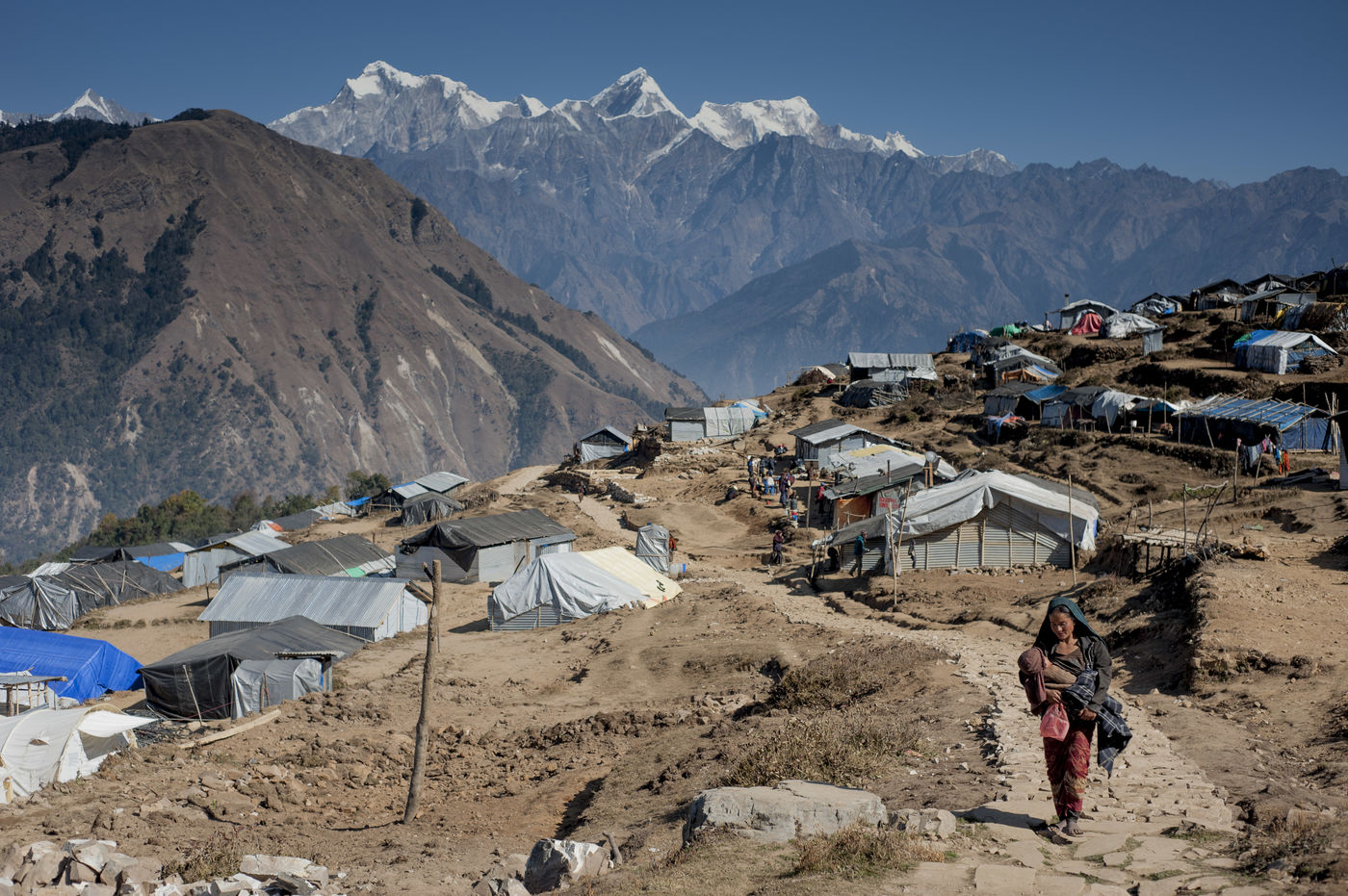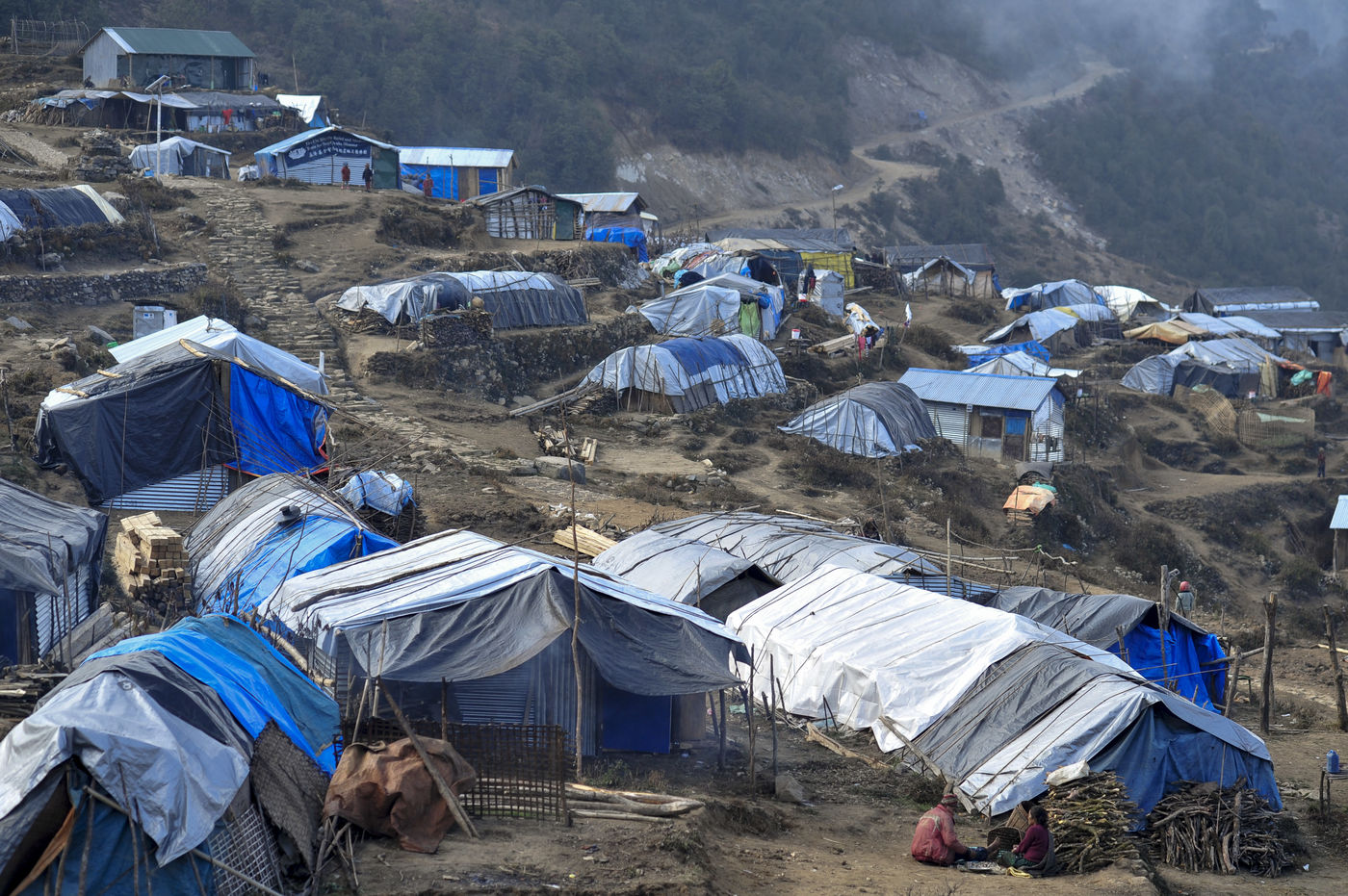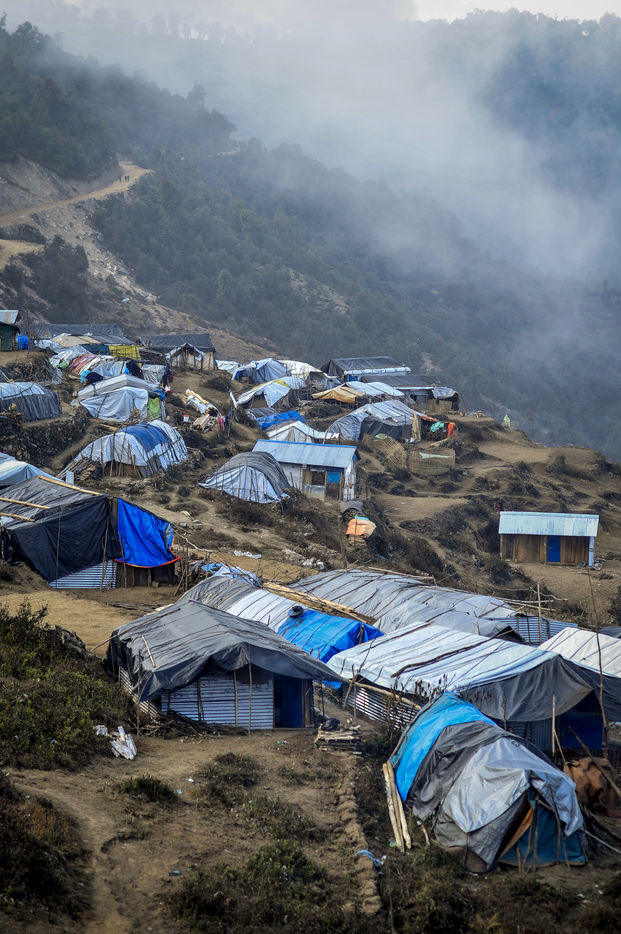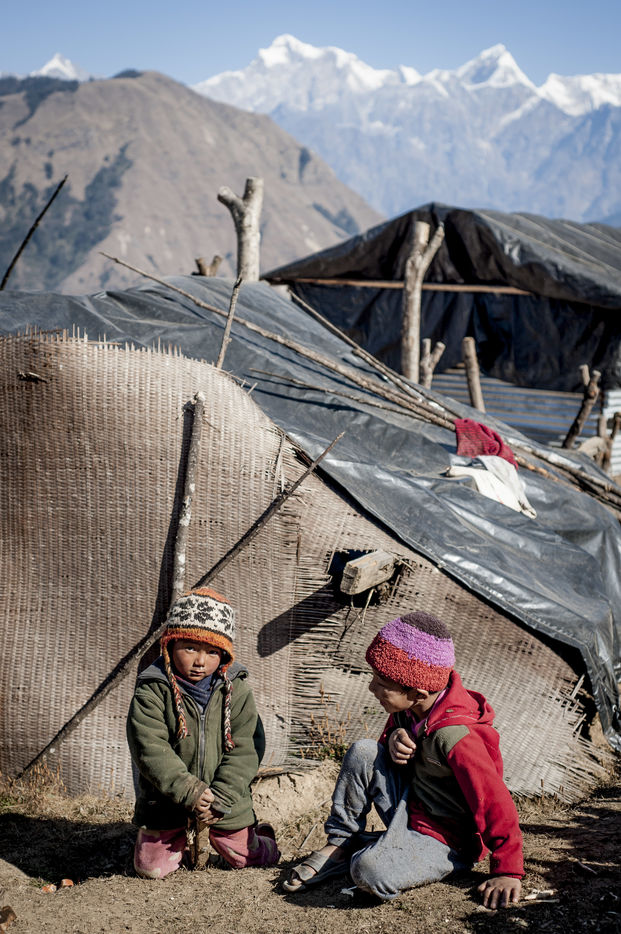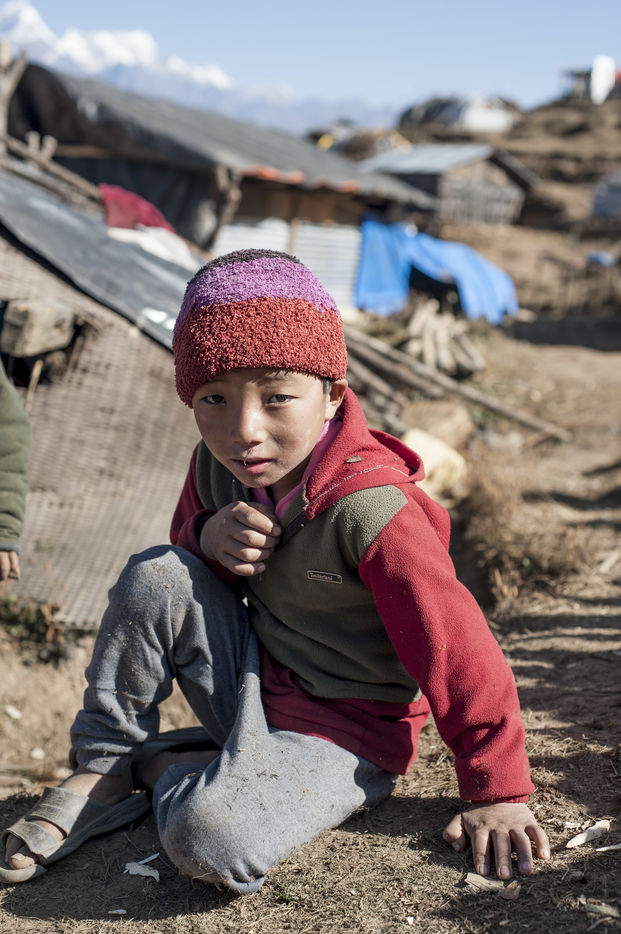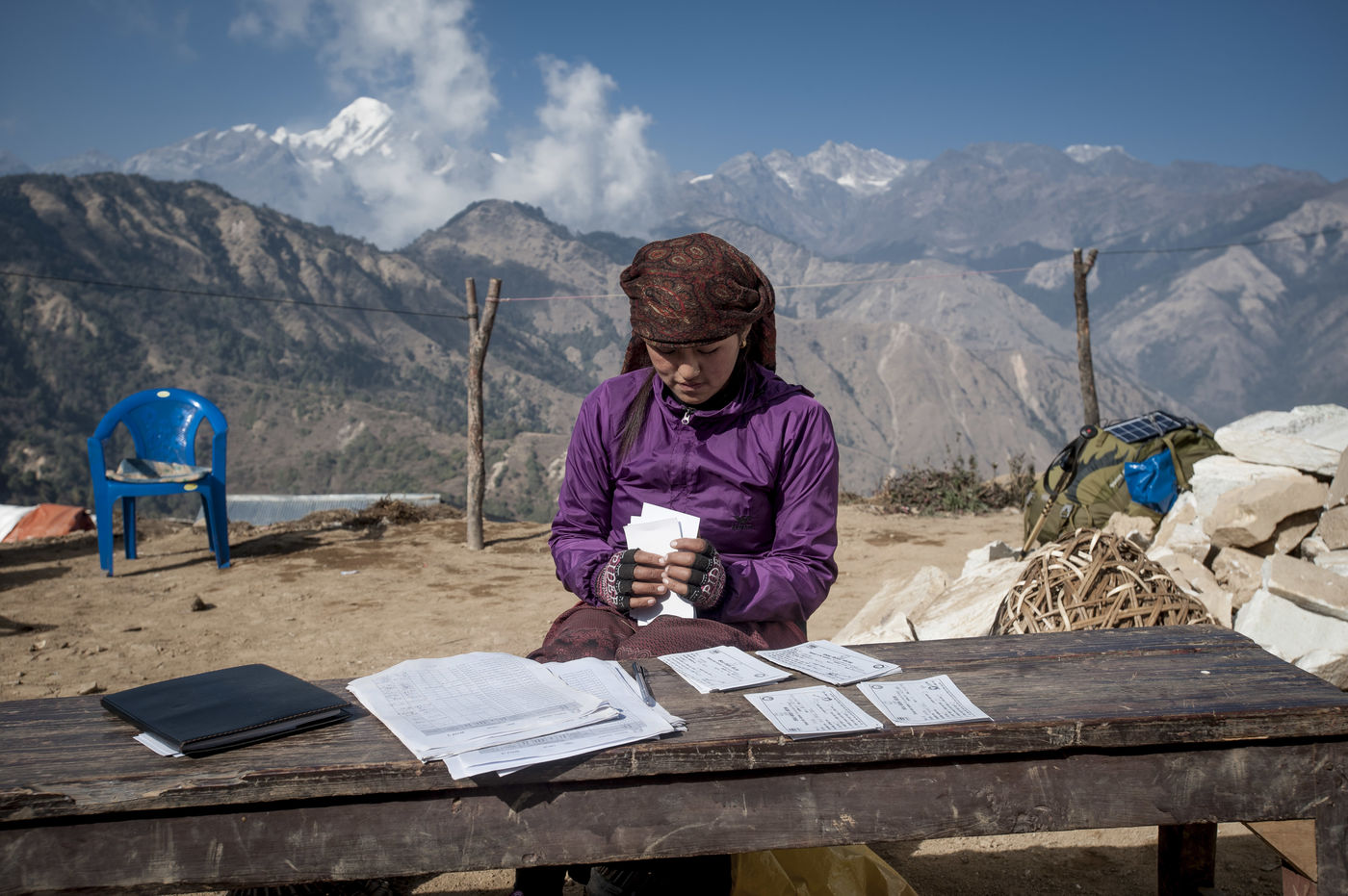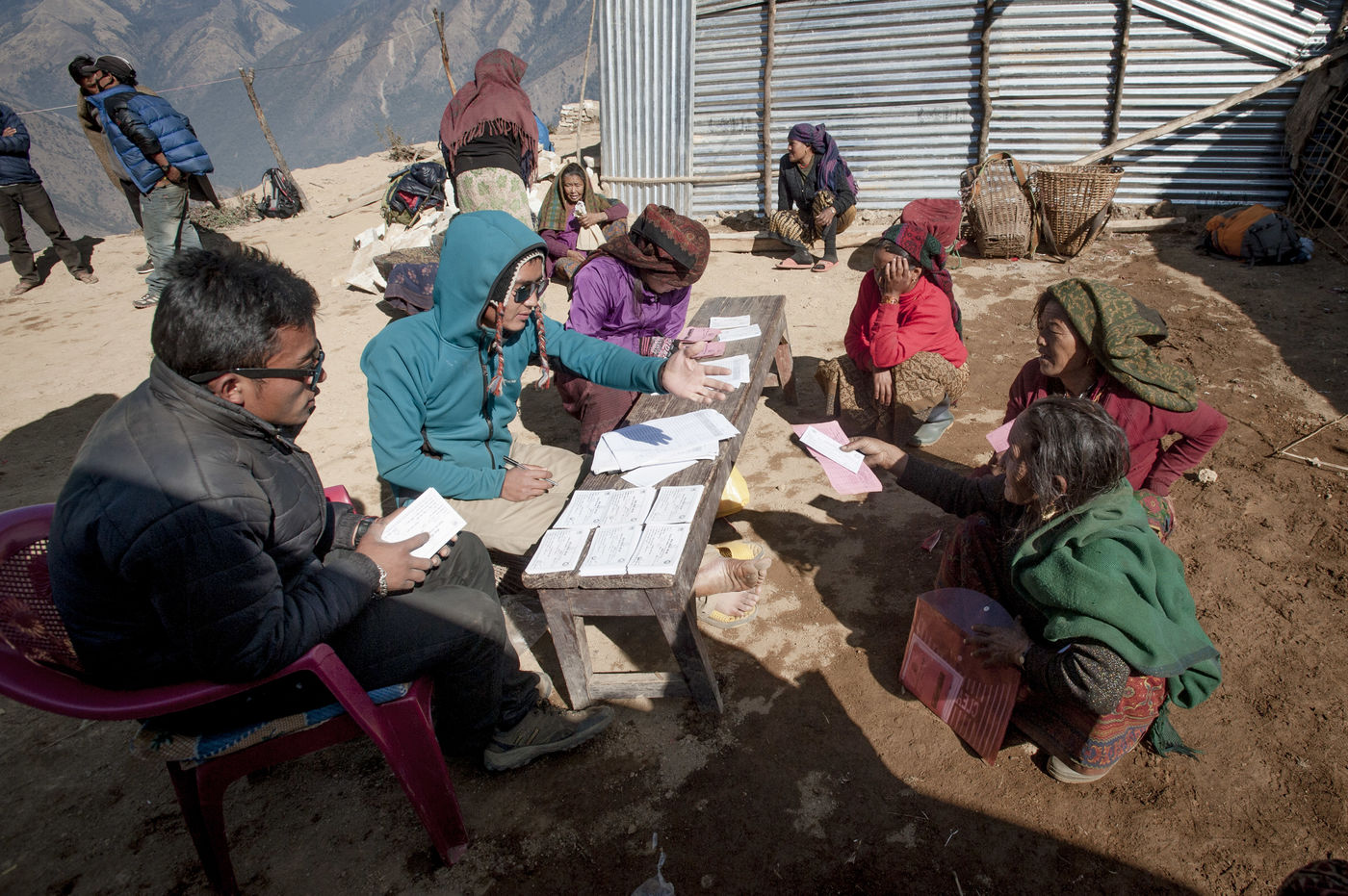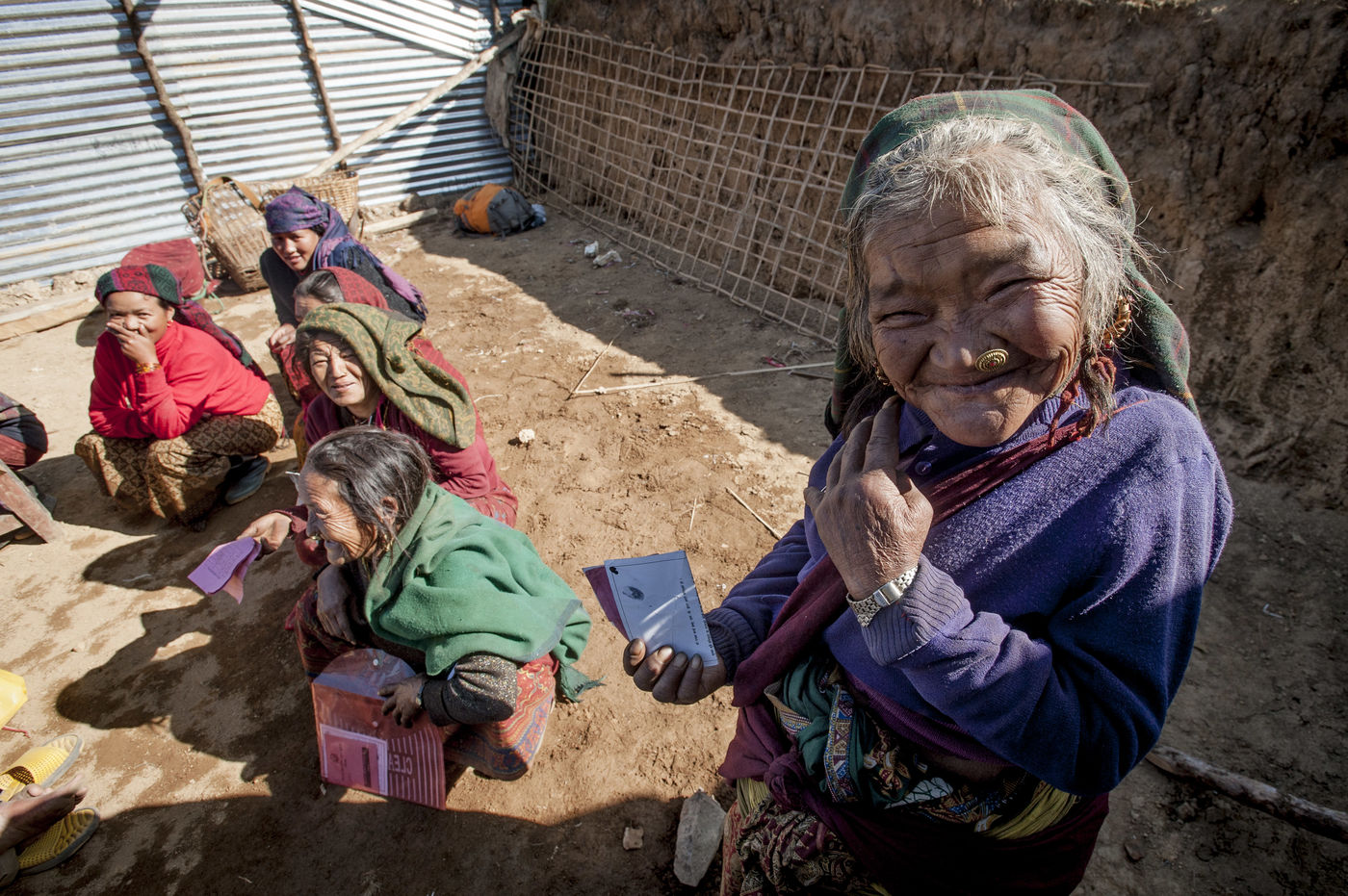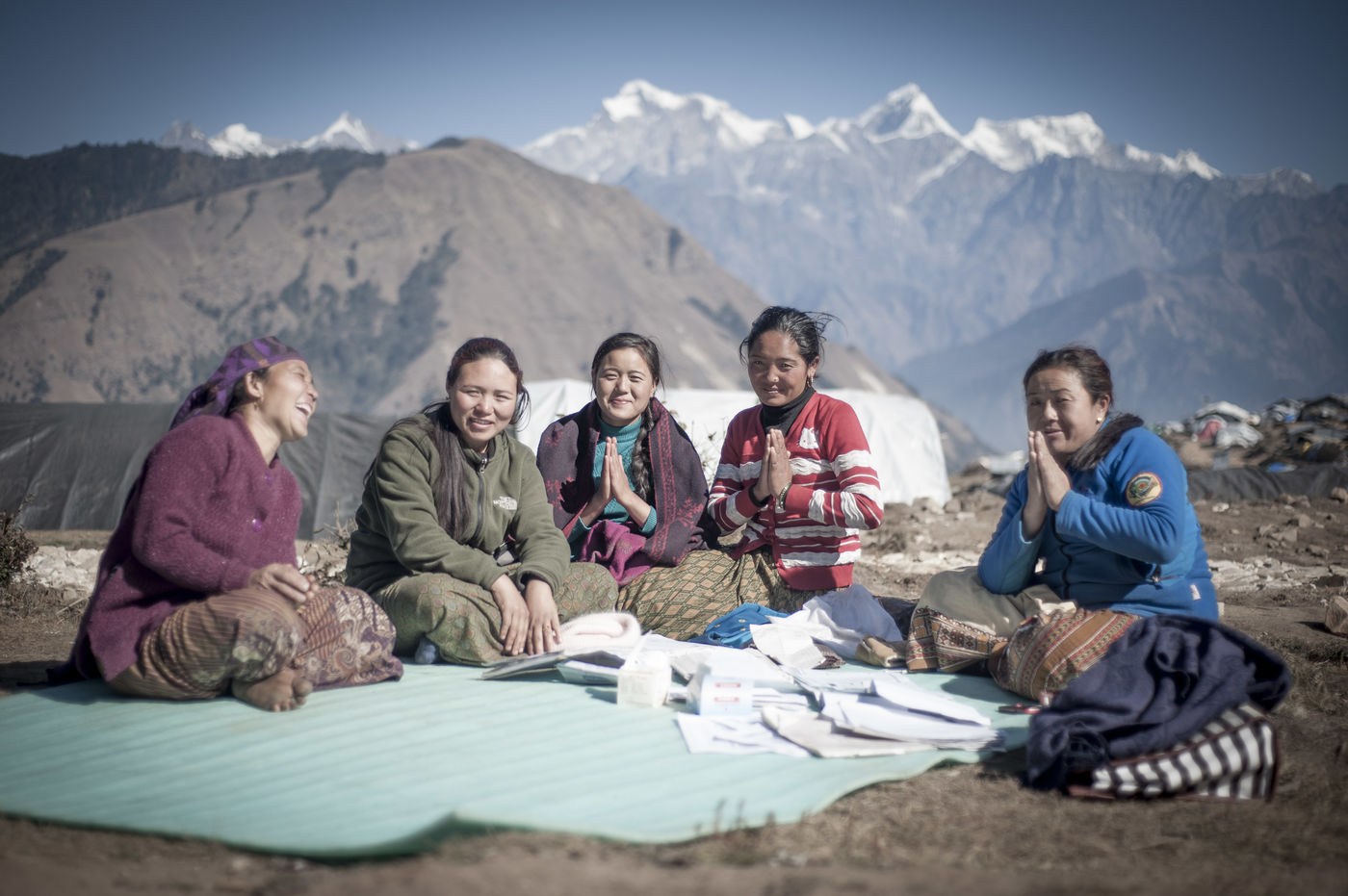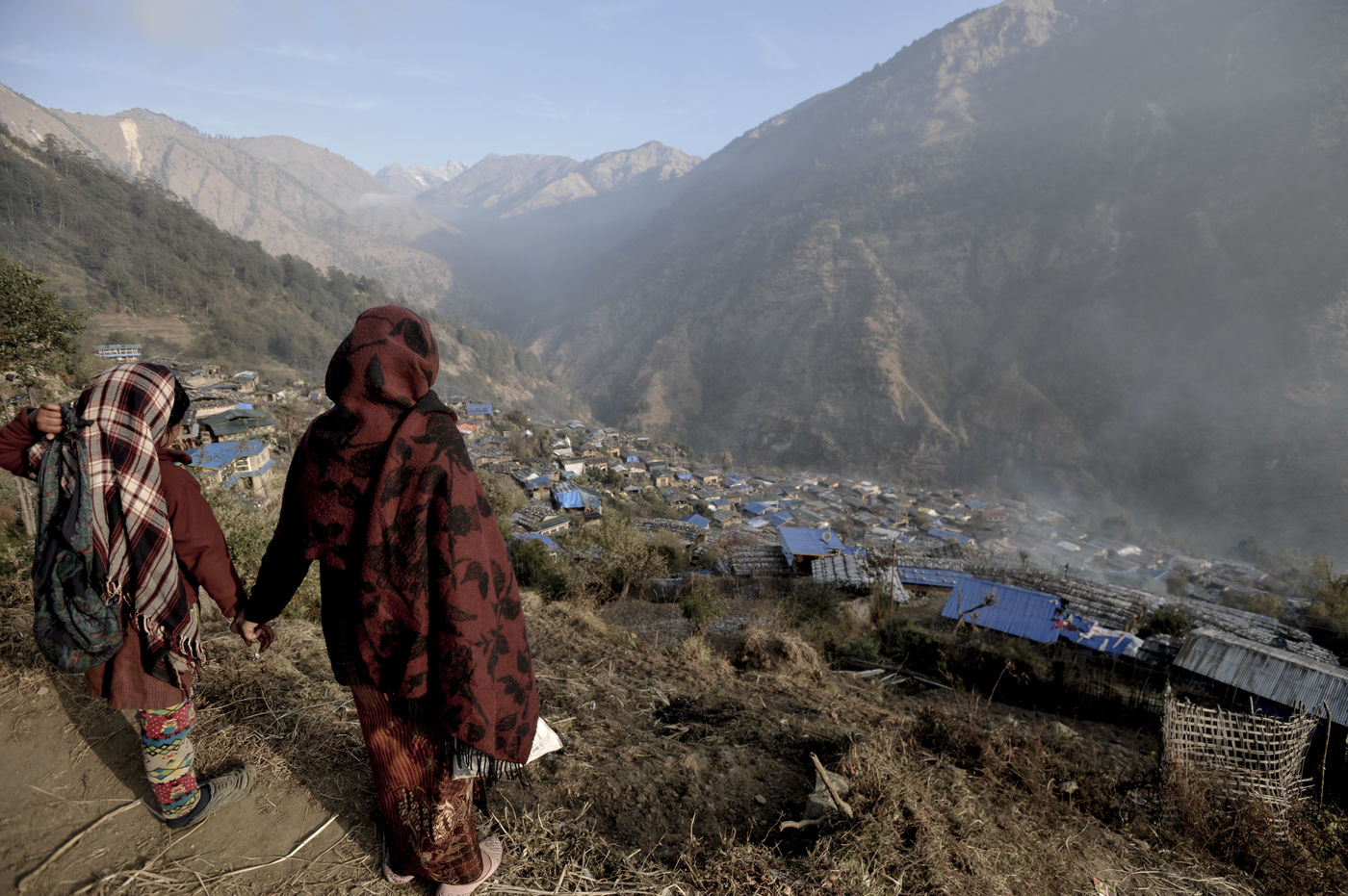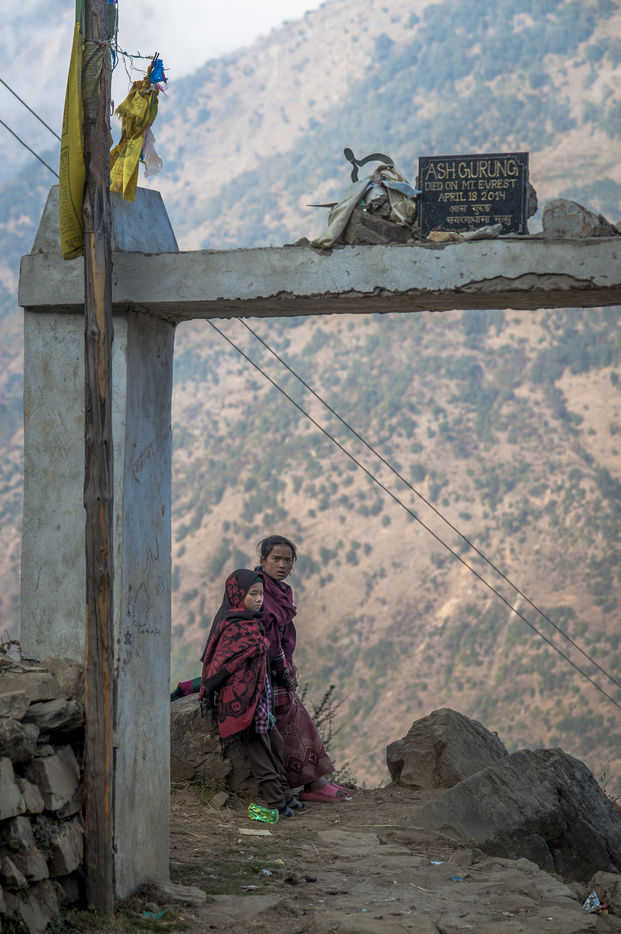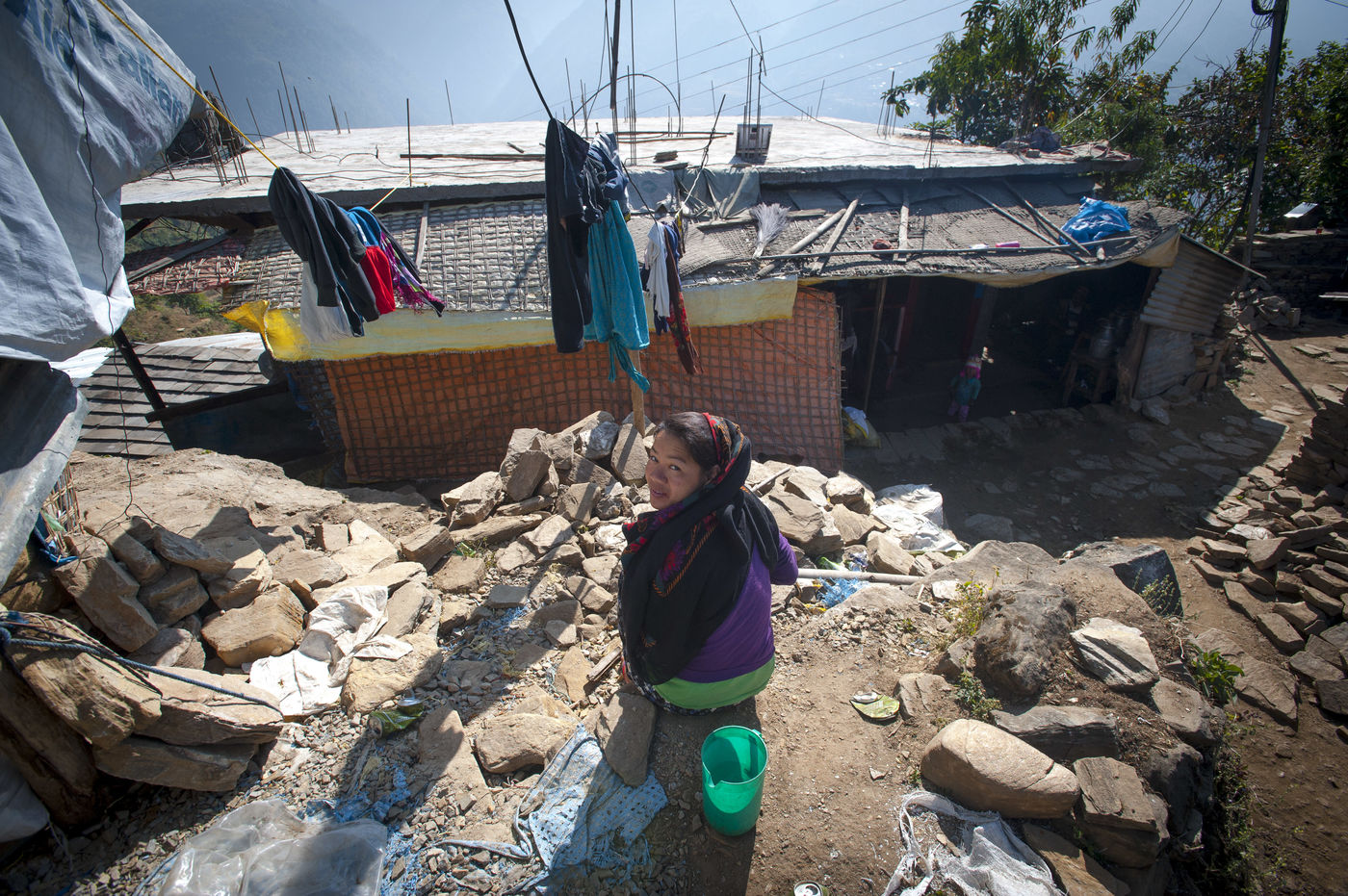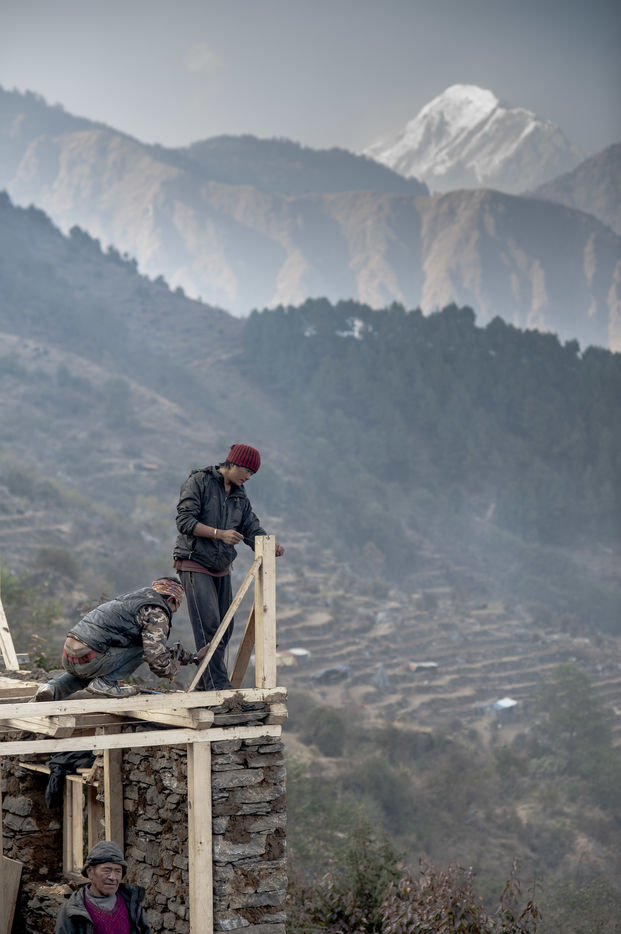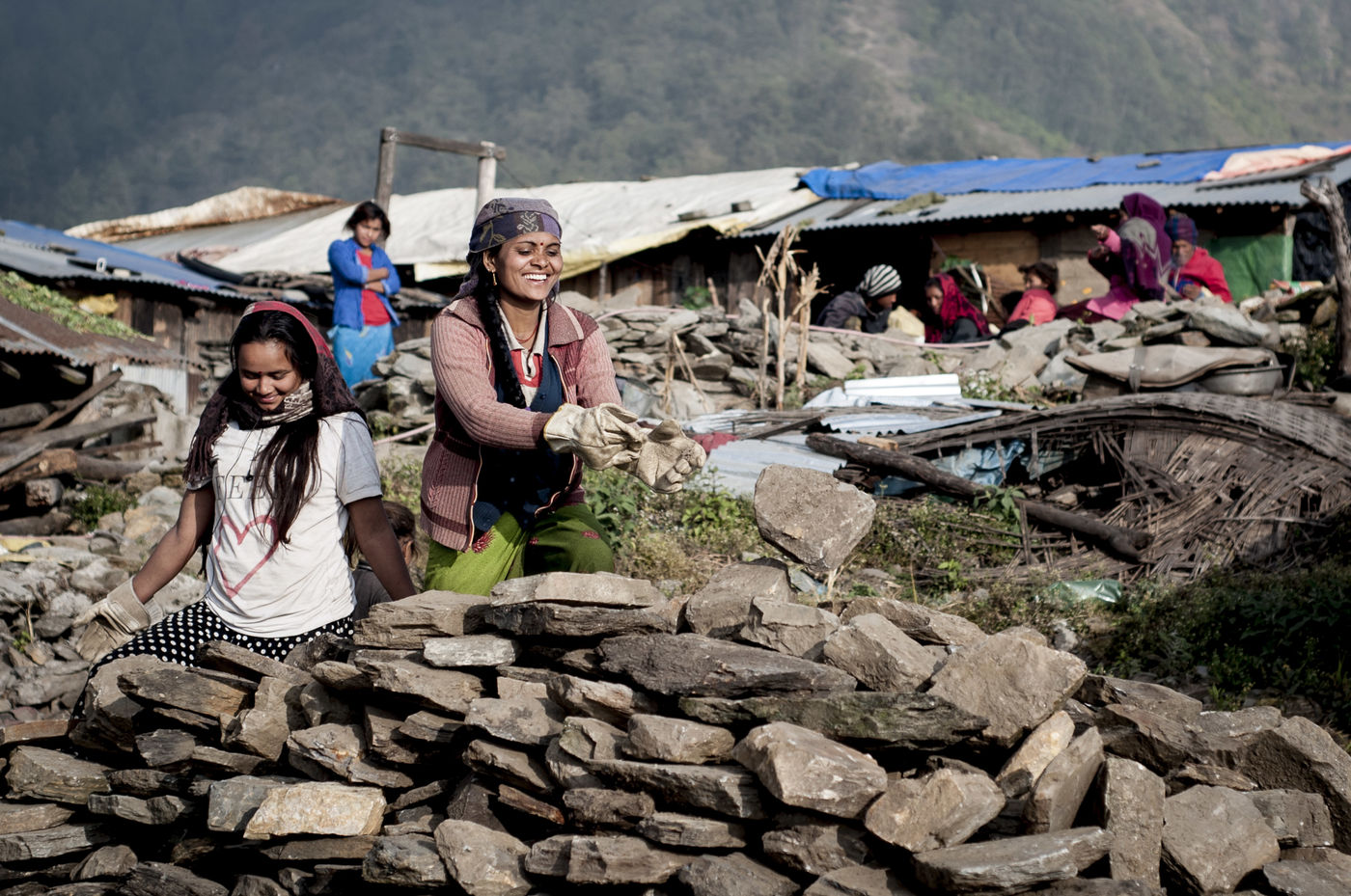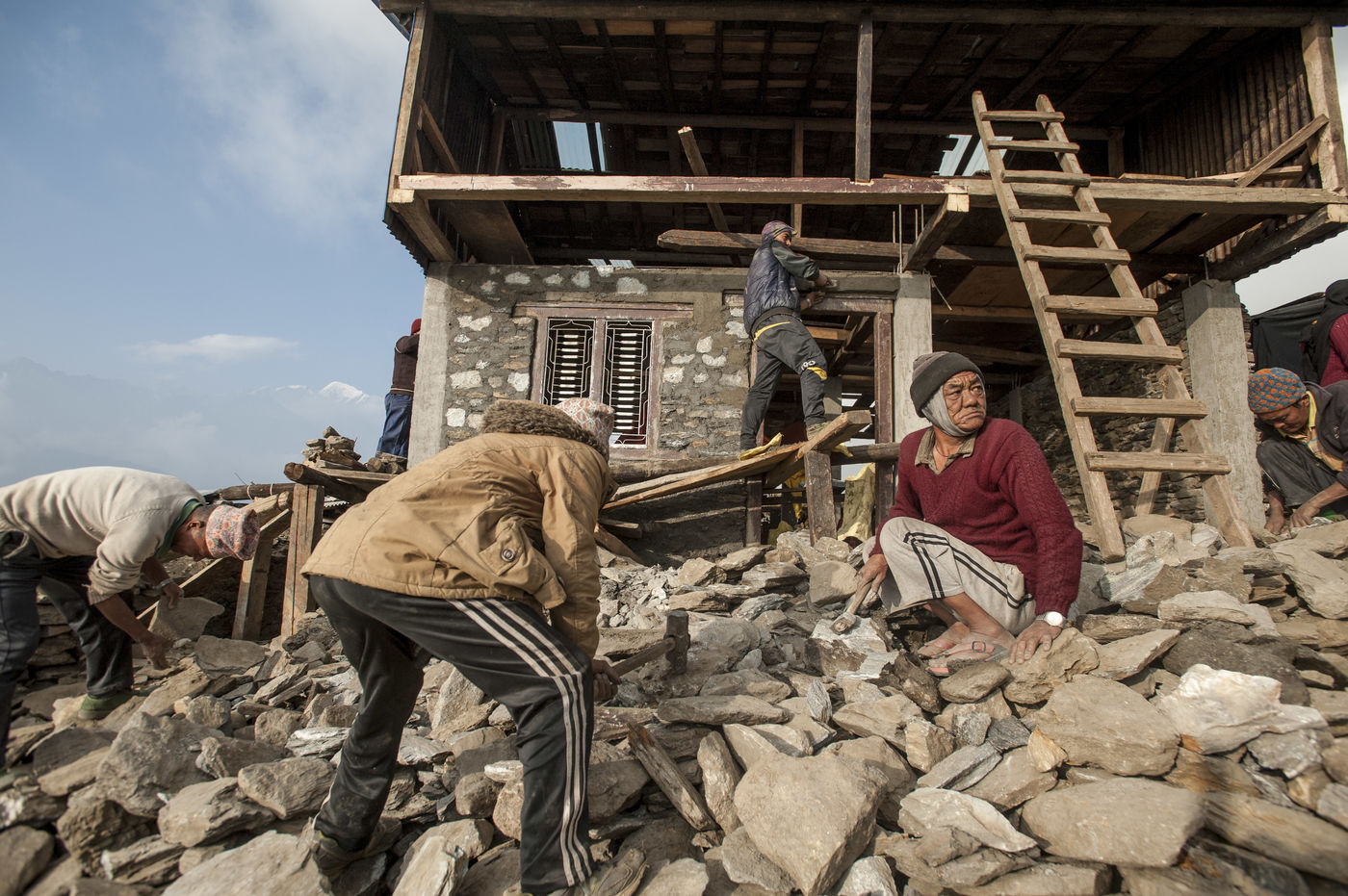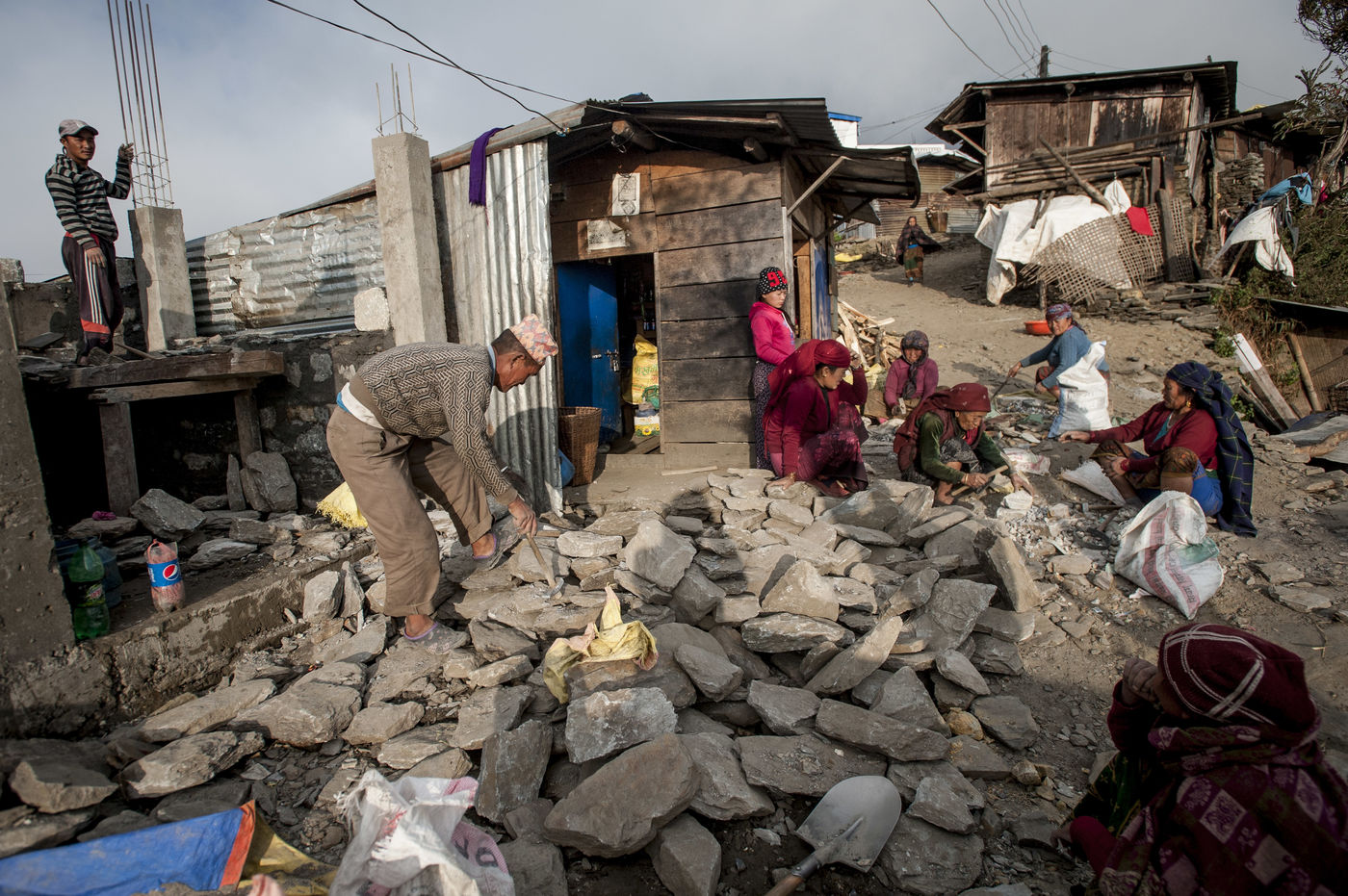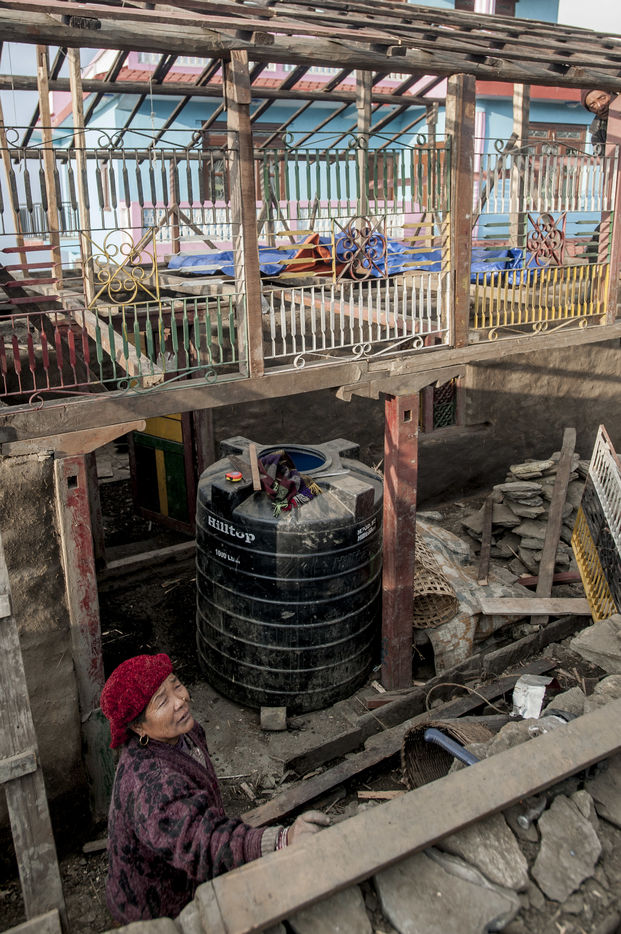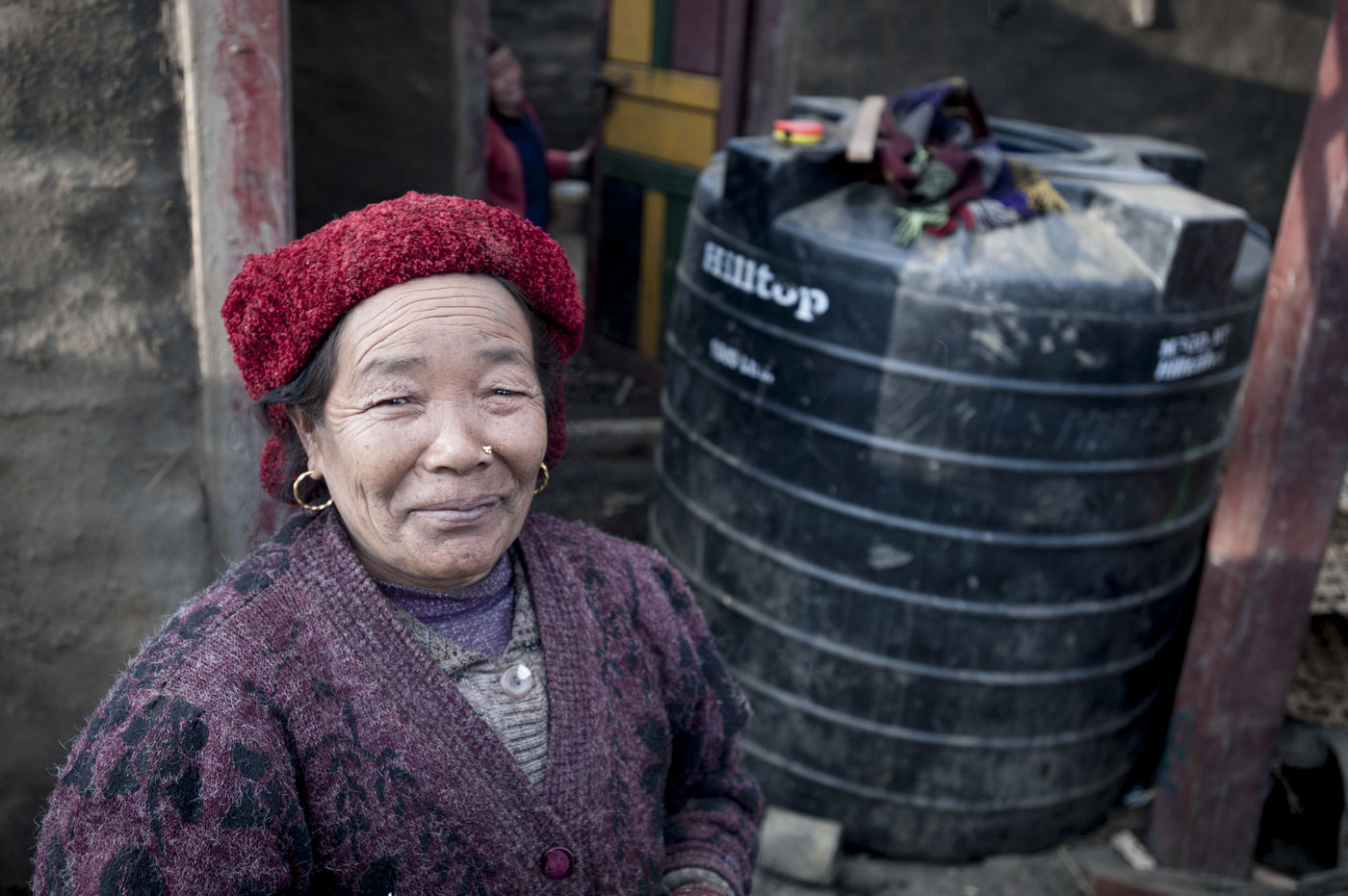NÉPAL - DANS L'ÉPICENTRE DU SÉISME
En avril et mai 2015, le Népal est frappé par un violent séisme de magnitude 7,8. Près de 9000 personnes perdent la vie et un nombre important de villages sont totalement détruits. Laprak, village gurung perché à 2200m d'altitude dans la vallée de Ghorka est situé dans l'épicentre du séisme. Six mois après la catastrophe, les habitants de Laprak travaillent sans relâche à la reconstruction de leur village détruit à 90%. Afin d'éviter de nouveaux glissements de terrain, un important campement temporaire (« Laprak haut ») a été installé avec l'aide logistique d'ONGs (tentes, tôles, bâches...) à 600m au-dessus du village sur des terrains peu pentus. Environ 400 familles Gurung vivent dans ce qui ressemble de loin à un vrai village mais où les conditions de vie sont extrêmement précaires : l'altitude, le froid, l'absence d'électricité et seulement deux sources d'eau disponibles.
Toutefois, près de la moitié des habitants refusent de redescendre vivre à « Laprak bas » par crainte de glissements de terrain et attendent les deux prochaines moussons afin de s'assurer de la stabilité des sols. Malgré la répartition des aides humanitaires internationales, l'immense travail de recensement des besoins, et l'énergie des habitants à rebâtir, on estime que 400.000 népalais vivant en altitude auront traversé l'hiver 2015/2016 dans des conditions de très grande précarité.
En 2022, les séquelles du séisme continuent à marquer le Népal, qui n'en a pas tout à fait terminé avec les reconstructions - la crise sanitaire ayant également perturbé le calendrier prévu. A Laprak, village étape du Tour du Manaslu, les lodges chez l'habitant accueillent à nouveau les trekkeurs et même si des maisons en ruines sont toujours visibles, le village a été largement reconstruit. De nombreuses associations continuent de financer des projets de rénovation des bâtiments érigés de façon provisoire, comme la construction du nouvel internat de l'école aux normes antisismiques prévue en 2023.
NEPAL - IN THE EARTHQUAKE EPICENTER
In April and May 2015, Nepal is hit by a violent earthquake of magnitude 7.8. Nearly 9000 people lost their lives and a significant number of villages were totally destroyed. Laprak, a Gurung village perched at an altitude of 2200m in the Ghorka Valley is located in the epicenter of the earthquake. Six months after the disaster, the inhabitants of Laprak are working relentlessly to rebuild their village, 90% of which was destroyed. In order to avoid new landslides, a large temporary camp ("Laprak haut") has been set up with the logistical help of NGOs (tents, sheets, tarpaulins...) 600m above the village on low slopes. About 400 Gurung families live in what looks like a real village from afar but where living conditions are extremely precarious: altitude, cold, no electricity and only two sources of water available.
However, nearly half of the inhabitants refuse to go back down to live in "Laprak bas" for fear of landslides and are waiting for the next two monsoons to ensure the stability of the soil. Despite the distribution of international humanitarian aid, the immense work of identifying needs, and the energy of the inhabitants to rebuild, it is estimated that 400,000 Nepalese living at altitude will have gone through the winter of 2015/2016 in conditions of great precariousness.
In 2022, the aftermath of the earthquake continues to mark Nepal, which is not quite finished with the reconstruction - the health crisis has also disrupted the planned schedule. In Laprak, a stage village of the Manaslu Tour, the lodges in the inhabitant's homes welcome again the trekkers and even if some ruined houses are still visible, the village has been largely rebuilt. Numerous associations continue to finance projects to renovate the buildings that were erected temporarily, such as the construction of a new school boarding school that will meet earthquake resistant standards in 2023.
